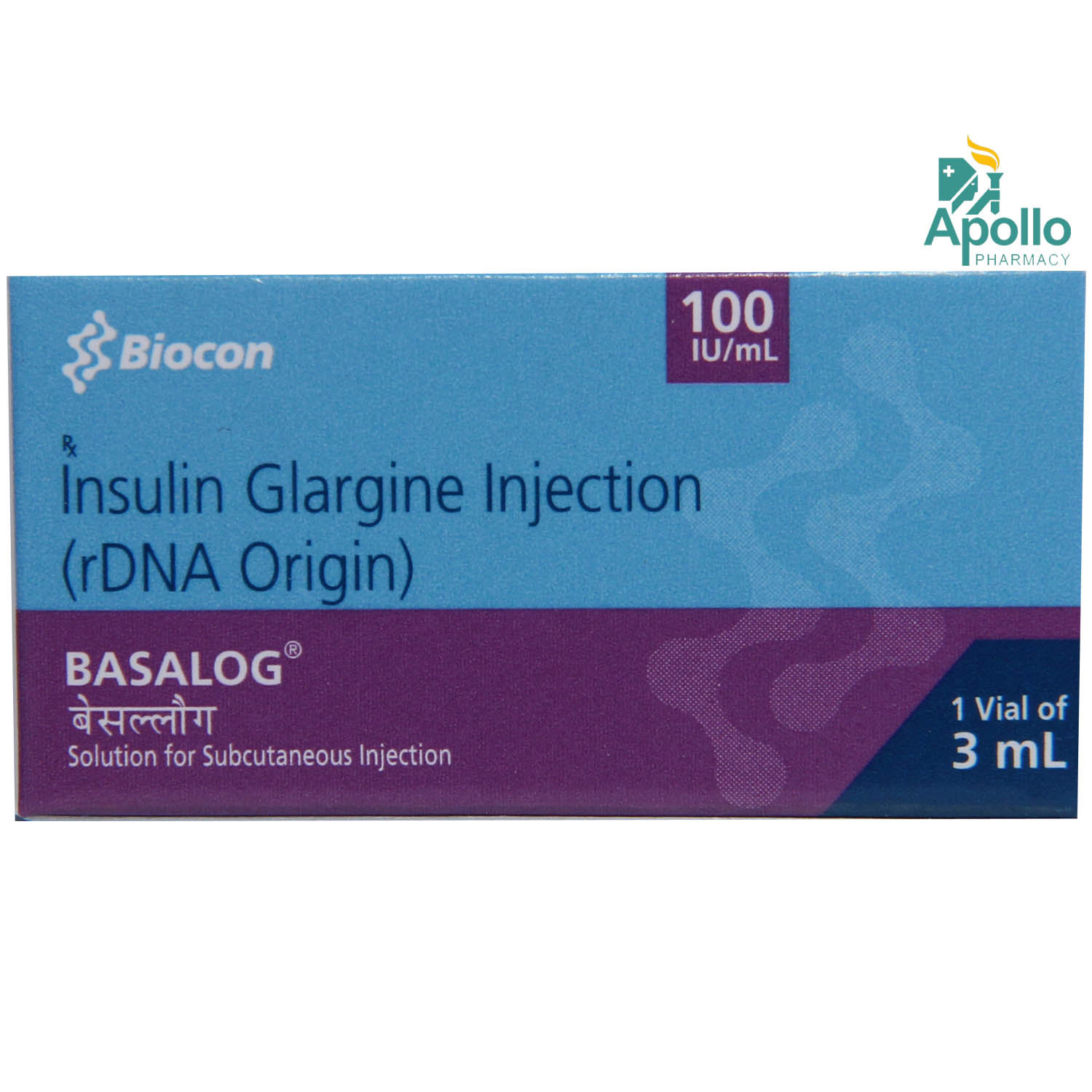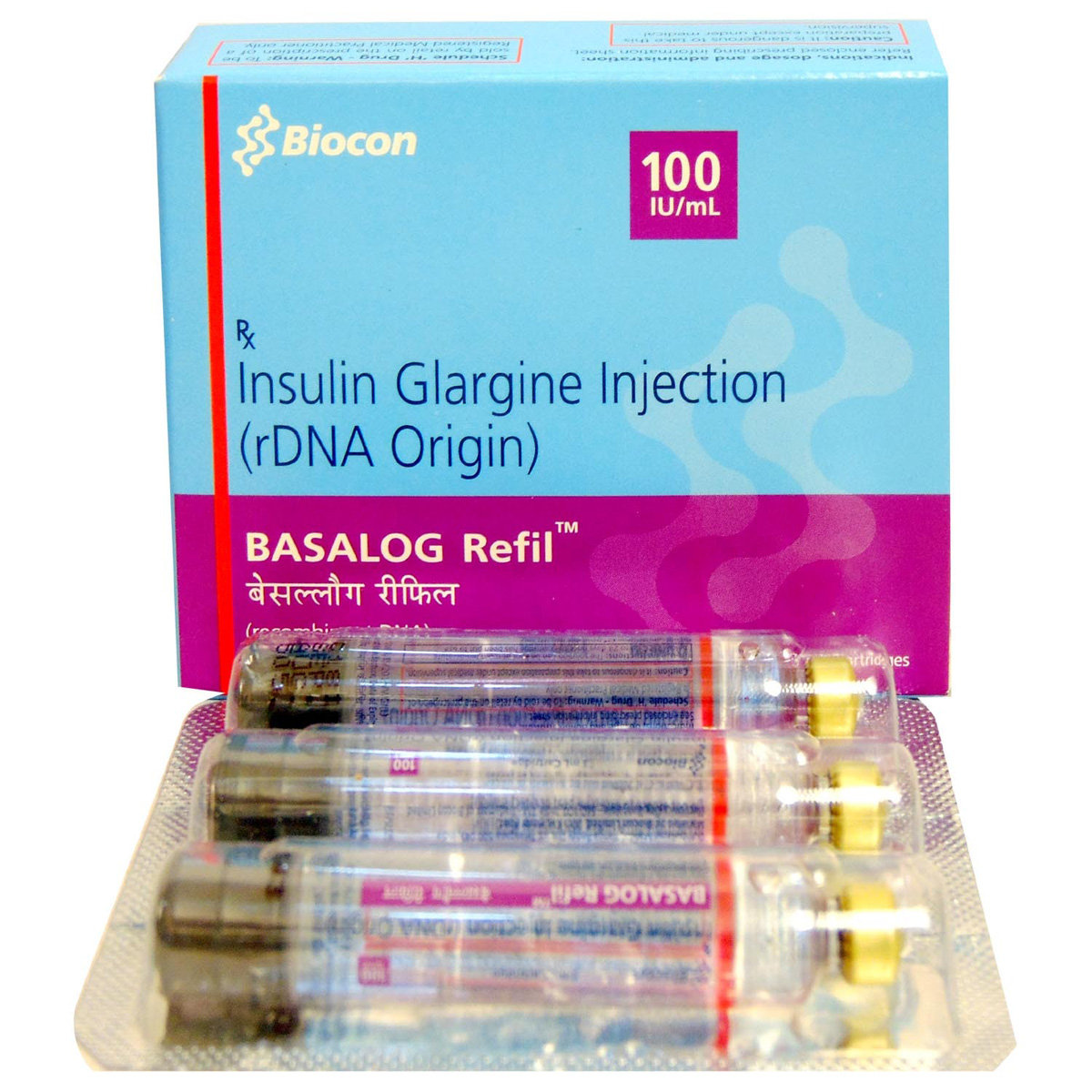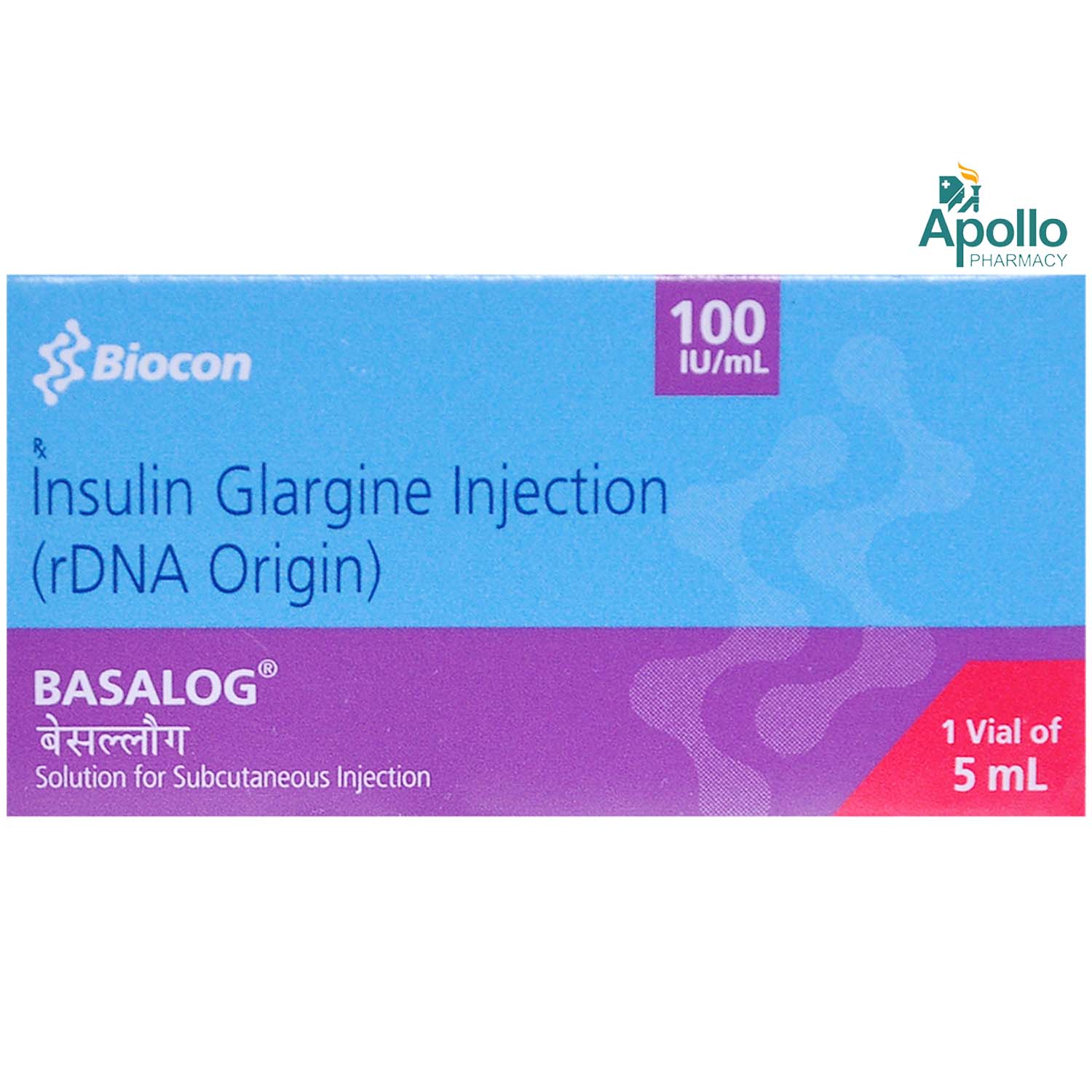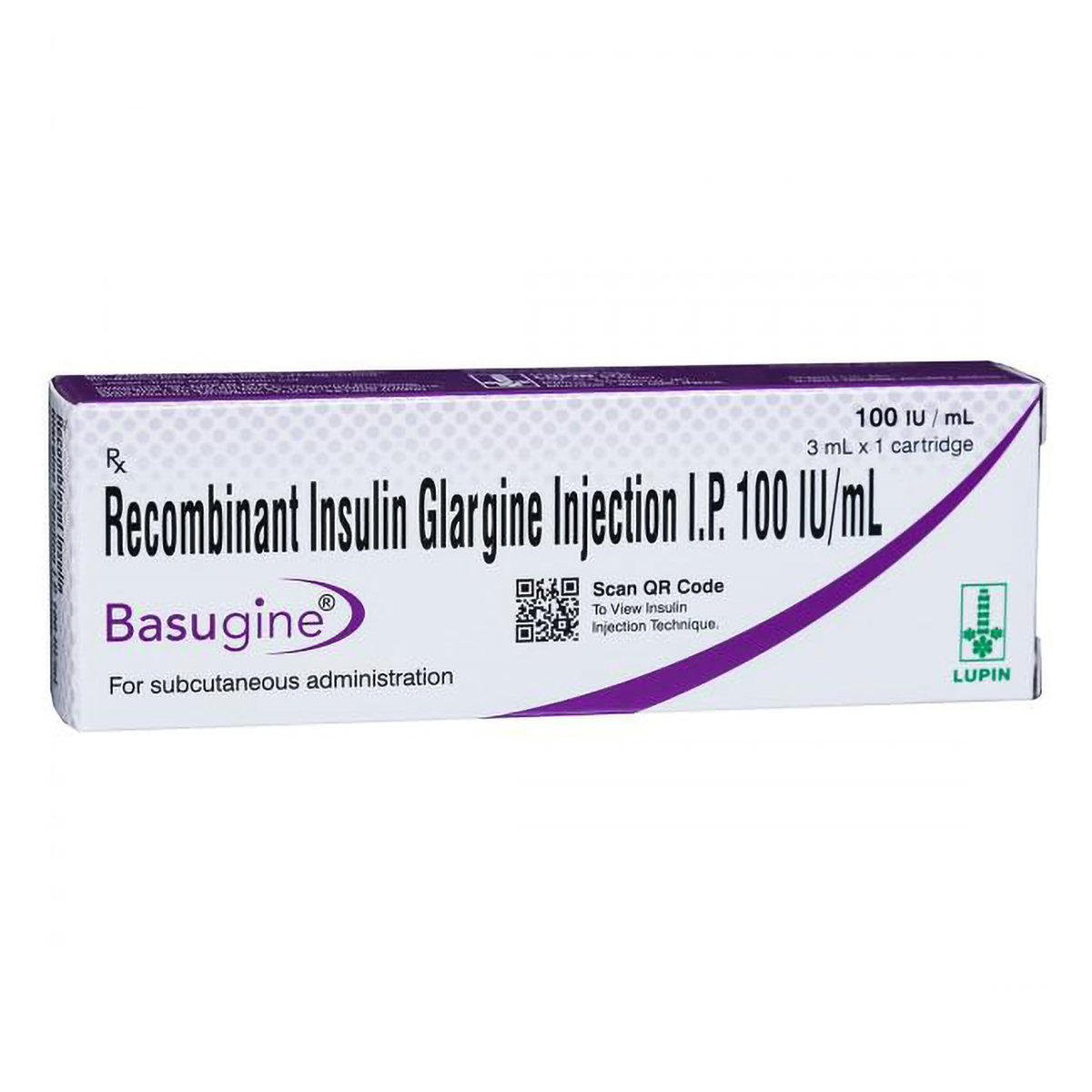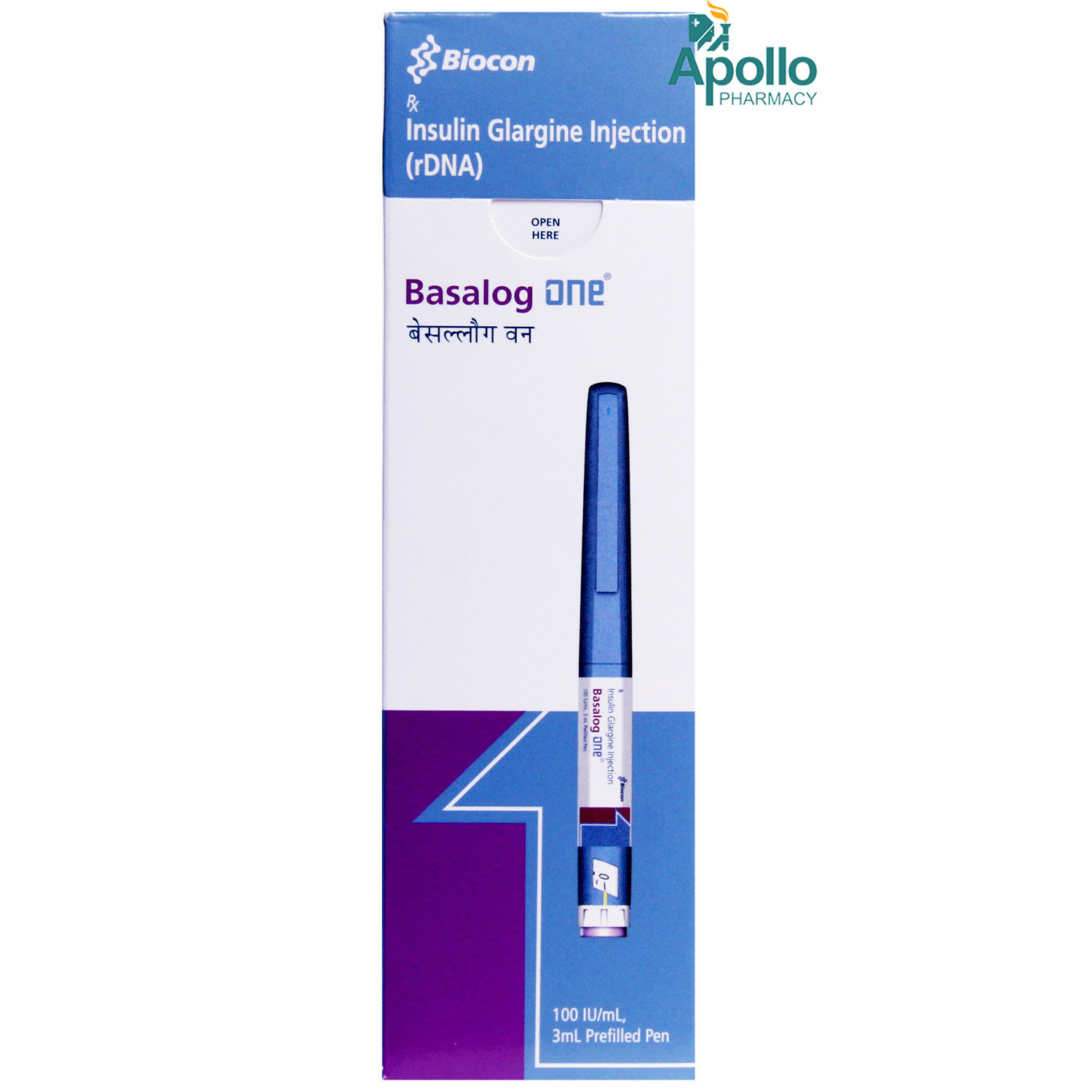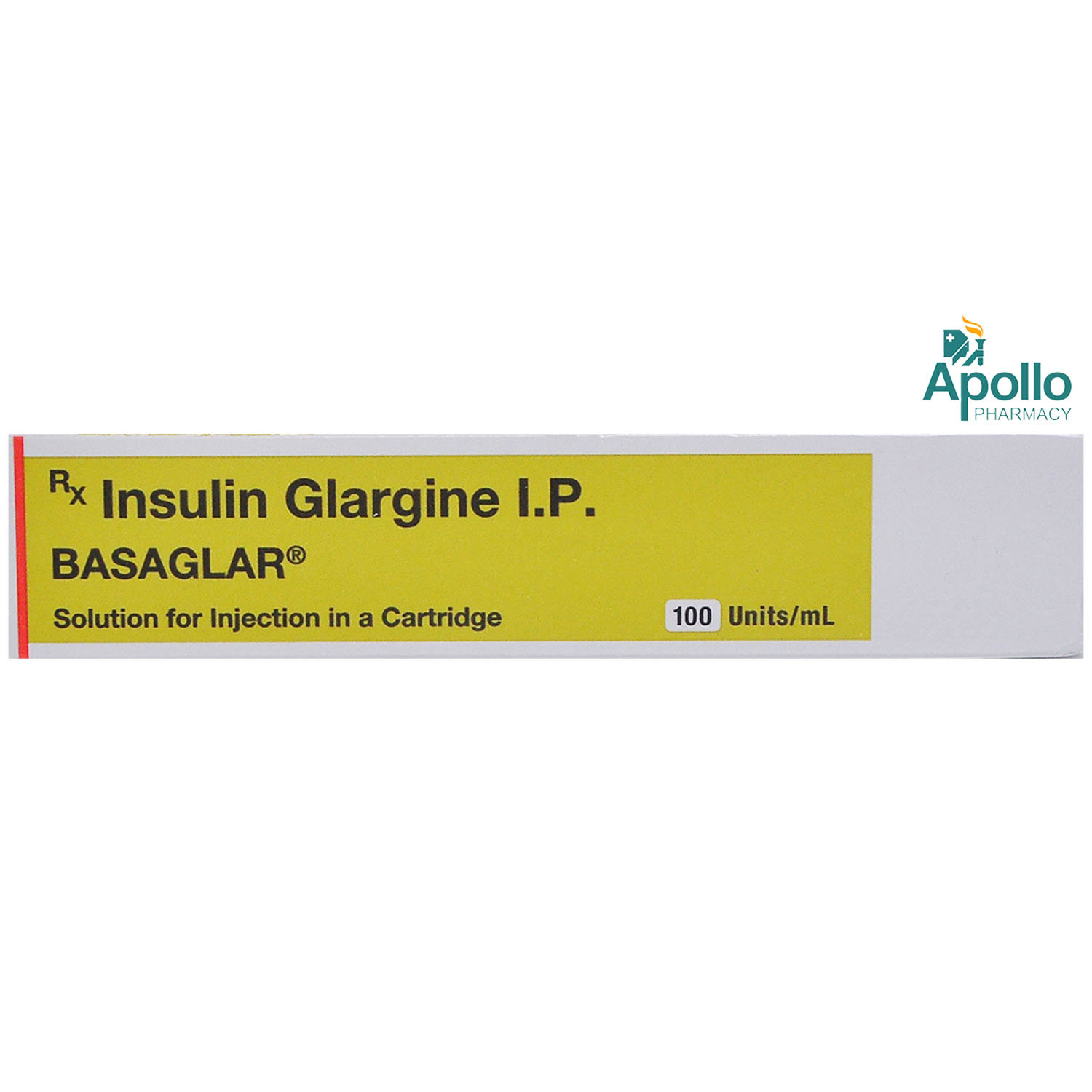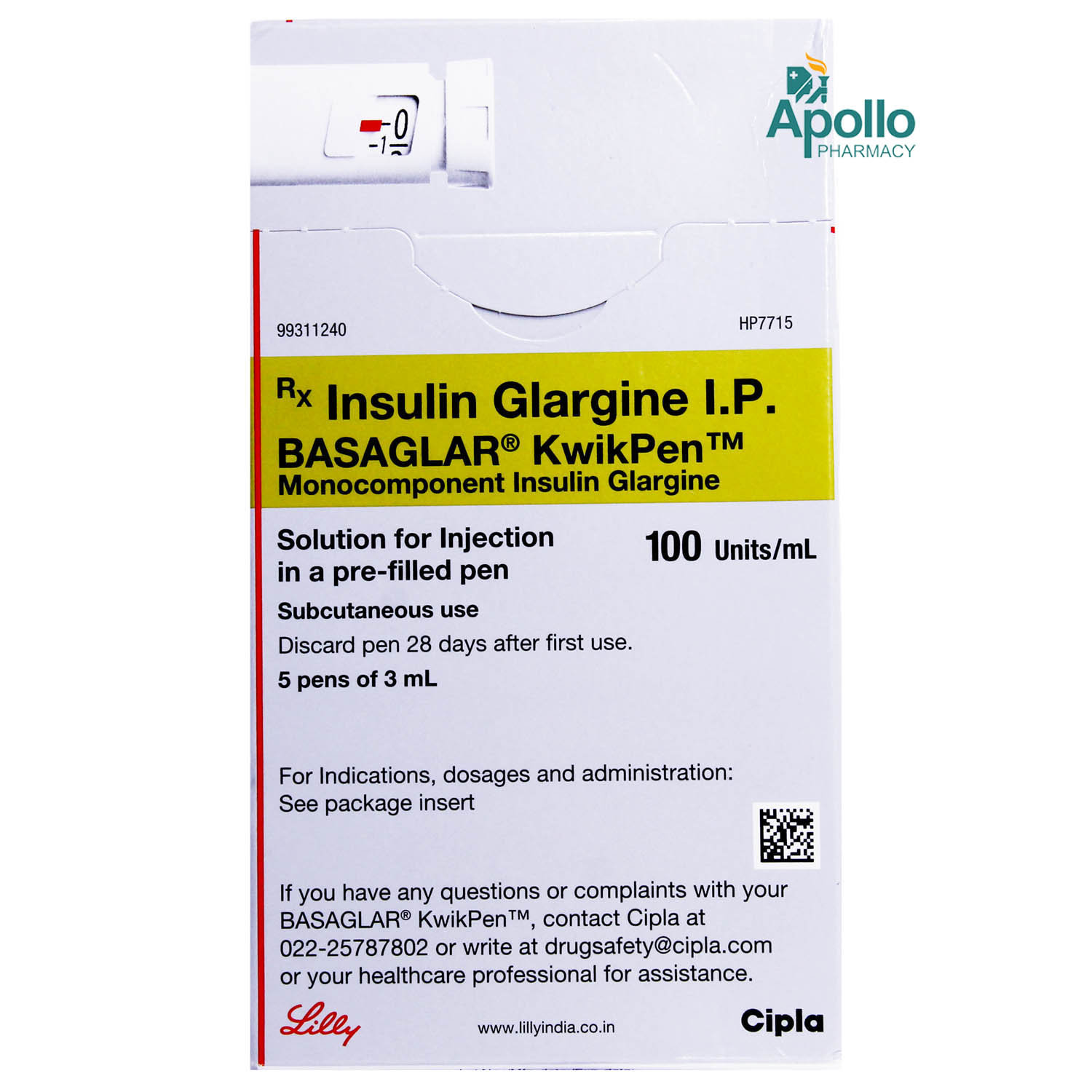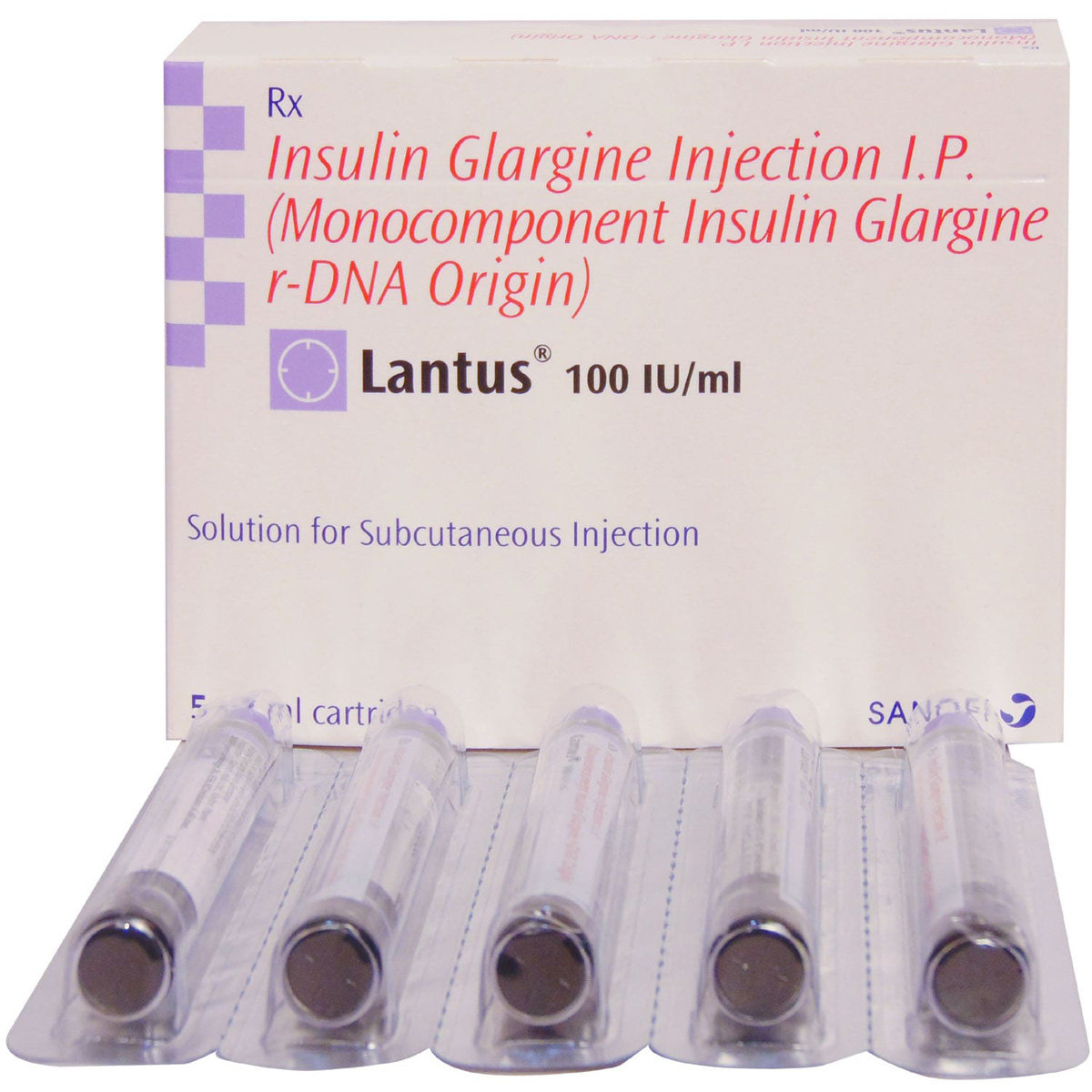Insulin Glargine
About Insulin Glargine
Insulin Glargine is a long-acting insulin that contains insulin glargine. This is a modified insulin, very similar to human insulin. Human insulin is the name which describes synthetic (human-made) insulin, which is laboratory grown to mimic the insulin in humans. Insulin Glargine is used to treat diabetes mellitus in adults, adolescents and children aged two years and above. Diabetes mellitus is a disease where your body does not produce enough insulin to control the level of blood sugar. Insulin Glargine has a long and steady blood-sugar-lowering action. Long-acting insulin takes about 2 hours to start acting and is designed to work uniformly so that there is no peak activity as such. The duration of long-acting insulin is up to 24 hours. Treatment with Insulin Glargine helps to prevent complications from your diabetes. Do not use Insulin Glargine to treat diabetic ketoacidosis (too much acid in the blood).
Insulin Glargine is a long-acting insulin that works by ensuring consistent sugar control. Hence, it helps lower blood sugar levels throughout the day. Based on your lifestyle, the results of your blood sugar (glucose) tests, and your previous insulin usage. Your doctor will advise you how much Insulin Glargine per day you will need and when you need to take it.
Sometimes, you may experience injection site reactions such as lumps under the skin. The injection site should be rotated to prevent skin changes such as lumps under the skin. You may also experience symptoms of hypoglycaemia (low blood sugar) such as sweating, clammy skin, anxiety, fast heartbeat. Most of these side effects of Insulin Glargine do not require medical attention and gradually resolve over time. However, if the side effects are persistent, reach out to your doctor.
Try not to stop taking Insulin Glargine of your own. Let your doctor know about this, as it may cause withdrawal symptoms. Do not take Insulin Glargine if you have any low blood glucose levels, kidney, liver, or heart problems, or problems with alcohol or other prescription recreational drugs. Along with Insulin Glargine, you should take a healthy diet, exercise regularly, and maintain weight as your doctor advises. Insulin Glargine is a cold chain medicine, so it must be stored in the refrigerator between 2-8 degrees Celsius; otherwise, its efficiency might get lost. Do not store it in the freezer of the fridge.
Uses of Insulin Glargine
Medicinal Benefits
Insulin Glargine has a long and steady blood-sugar-lowering action. Long-acting insulin takes about 2 hours to start acting and is designed to work uniformly so that there is no peak activity as such. The duration of long-acting insulin is up to 24 hours. This insulin causes body tissues to absorb glucose from the blood and decreases glucose production by the liver. Insulin Glargine helps in improving the glycaemic control, which in turn reduces the risk of progression of complications of diabetes like damage to the retina (retinopathy), impairment of kidney (nephropathy), injury of nerve cells (neuropathy), delayed wound healing, diabetic foot ulcer and others. Besides this, Insulin Glargine can be safely prescribed to pregnant and lactating mothers.
Directions for Use
Storage
Side Effects of Insulin Glargine
- Low blood sugar or hypoglycaemia
- Cold sweat
- Cool pale skin
- Nervousness
- Anxious feeling
- Unusual tiredness or weakness
- Confusion
- Difficulty in concentration
- Drowsiness
- Excessive hunger
- Temporary vision changes
- Headache
- Nausea
- Increased pulse or heartbeat (palpitation)
Drug Warnings
Insulin Glargine is for subcutaneous (under the skin) use only and should never be administered intravenously (IV) or in the veins. If you are changing the brand of insulin or if you need to inject your insulin by another method, it should be done under strict medical supervision. Cases of heart failure were reported when pioglitazone was used with insulin, especially in patients at high risk of cardiac heart failure. The first symptoms of hyperglycaemia (high blood sugar level) may include symptoms like excessive thirst, dry mouth, increased frequency of urination, nausea, vomiting, drowsiness, flushed dry skin, loss of appetite and acetone odour of the breath. You should closely monitor these symptoms. Symptoms like heart failure, weight gain and oedema (fluid deposition in tissue) should not be overruled. It is advisable not to consume alcohol as it may increase or decrease your blood glucose level. Care should be taken while travelling across more than two time zones. Your doctor may adjust your insulin schedule. Insulin Glargine may decrease the potassium level, leading to a state of hypokalaemia that, if left untreated, may lead to respiratory paralysis, irregular heartbeat rhythm, coma and even death. Do not take Insulin Glargine if you have any low blood glucose levels, kidney, liver, or heart problems, or problems with alcohol or other prescription recreational drugs.
Drug Interactions
Drug-Drug Interactions: Insulin Glargine may have an interaction with all other antidiabetic pills (sitagliptin), blood sugar enhancers (diazoxide), blood pressure-lowering pills (metoprolol, clonidine), antidepressants (lithium, fluoxetine), pain killers (aspirin, pentoxifylline, propoxyphene), anti TB drug (isoniazid), growth hormone (somatropin), thyroid hormone-related drugs (levothyroxine), antipsychotic medicines (phenothiazine, clozapine, olanzapine), anti-cholesterol drugs (fenofibrate), anti-asthmatic (epinephrine, salbutamol, terbutaline), female hormones like oestrogens and progestogens.
Drug-Food Interactions: Insulin Glargine may interact with an ayurvedic, homoeopathy, Unani, herbal supplements or OTC items. Tell your doctor if you are using these products. Avoid drinking alcoholic beverages with Insulin Glargine as it may raise or lower your blood sugar level.
Drug-Disease Interactions: Insulin Glargine should not be given to patients with kidney disease, liver disease, low blood sugar/glucose level (hypoglycaemia), and low potassium level (hypokalaemia).
Drug-Drug Interactions Checker List:
Safety Advice

Alcohol
unsafeYou are recommended not to consume alcohol along with Insulin Glargine to avoid unpleasant side-effects. Alcohol may either decrease or increase the blood sugar level which can be fatal.

Pregnancy
safe if prescribedInsulin Glargine can be used during pregnancy. Your insulin dose may need to be changed during pregnancy and after delivery. Please consult your doctor before taking Insulin Glargine.

Breast Feeding
safe if prescribedInsulin Glargine can be given safely to nursing mothers but only under the supervision of a physician. Physician may adjustments in your insulin doses and your diet.

Driving
cautionDrive with caution, Insulin Glargine usually causes drowsiness and affects driving ability. Your ability to concentrate and react may be reduced if you have hypoglycaemia (low blood sugar).

Liver
cautionInsulin Glargine to be taken with caution, especially if you have a history of liver diseases/conditions. The dose may have to be adjusted by your doctor.

Kidney
cautionInsulin Glargine to be taken with caution, especially if you have a history of kidney diseases/conditions. The dose may have to be adjusted by your doctor.

Children
safe if prescribedInsulin Glargine can be given safely to children provided; dose has to be prescribed by a child specialist.
Habit Forming
Diet & Lifestyle Advise
- Exercise may lower your body’s need for insulin during and sometimes after physical activity.
- Exercise may also speed up the effect of an insulin dose, especially if the activity involves the area of the injection site (for example, the leg should not be used for injection just before running).
- Discuss with your doctor how to adjust your insulin regimen to accommodate exercise.
- Avoid eating sugar food and prefer food cooked food low in calories.
- When travelling across more than two time zones, you should talk to your doctor concerning adjustments in your insulin schedule.
Special Advise
Change (rotate) your injection sites within the area you chose with each dose to reduce your risk of getting lipodystrophy (pitted or thickened skin) and localized cutaneous amyloidosis (skin with lumps) at the injection sites. Do not use the same spot for each injection or injection where the skin is pitted, thickened, lumpy, tender, bruised, scaly, hard, scarred or damaged.
Patients Concern
Disease/Condition Glossary
Diabetes: Diabetes is a chronic or lifelong disease that prevents the body from utilizing insulin properly. Insulin is the hormone that controls sugar levels in the blood. Diabetes is a condition in which blood glucose levels are above normal. It is of two types, namely: type-1 and type-2 diabetes. Type-1 diabetes is a condition in which the pancreas produces little or no insulin. Type-2 diabetes affects the way body processes the sugar. Symptoms of diabetes include lack of energy, tiredness, frequent urination, excess thirst, dry mouth, blurry vision, constant hunger, weight loss, and itchy skin.
FAQs
Insulin Glargine should not be given into the veins or intravenously (IV) route. It should be only administered in the subcutaneous region below the skin. Abdomen regions (stomach) is the best site for the injecting Insulin Glargine. However, you can also inject Insulin Glargine in the upper arm, or thigh region.
Insulin Glargine can be given to treat both the condition of type 1 and type 2 diabetes mellitus. However, your doctor will decide whether Insulin Glargine can be given to you or not depending on your present condition. Insulin Glargine should be avoided in patients who are allergic to Insulin Glargine or other forms of insulin. It should be avoided in patients suffering from low potassium level (hypokalemia), moderate to severe kidney disease or liver disease. Inform the doctor if you are pregnant or breastfeeding.
The active substance is insulin glargine. Each ml of the solution contains 100 units of insulin glargine (equivalent to 3.64 mg).
Insulin Glargine has a long and steady blood-sugar-lowering action. Long-acting insulin takes about 2 hours to start acting and is designed to act uniformly so that there is no peak activity as such. The duration of long-acting insulin is up to 24 hours.
Insulin Glargine is a cold chain medicine which has to be stored 2-8 degree Celsius only else its efficiency of reducing blood glucose level declines. Do not keep inside the freezer.
Type-2 diabetes generally does not affect healthy children and teens, but it may affect children who are obese, which is also known as Childhood Obesity.
Insulin Glargine is generally safe to take for a long time. In fact, it works best if you take it for many months or even years.

